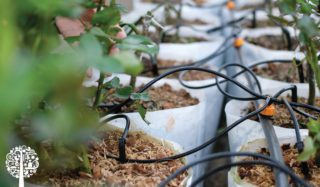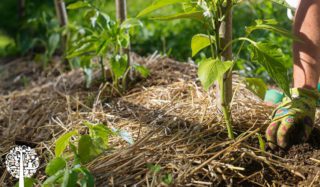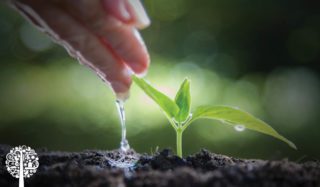Tips And Tricks For A Thriving Garden |
It’s summer; the days are dry and hot, and a nice tall lemonade hits the spot. It’s no different for the garden. A refreshing drink of water perks everything up! But too much ice cream on a hot summer day isn’t always healthy; neither is too much water for our plants.
In areas with high humidity, moisture stays in the soil; adding more can cause roots to rot or encourage bacterial and fungal disease.
Additionally, many communities restrict lawn and garden watering to once or twice weekly. This becomes a problem for drier areas. So what’s a gardener to do?
Observe
Observation is the first principle of permaculture. It encourages the gardener to get to know their surroundings. Before dragging out the hose, take a walk through the garden, touch the soil, and check containers. If the soil feels cool or damp, the ground is retaining water. This is a signal to hold off. Grab a handful of dirt, and if it crumbles in your hand, it indicates the garden is thirsty.
Create A Blanket
Covering garden beds with compost, wood chips, or top dressing with soil throughout the growing season creates a blanket that holds in moisture and lessens the need to be consistently watered.
Self-Regulation
When it comes to watering, less is more. Give the garden enough water to moisten the soil but not oversaturate it. Plant roots furrow deep down into the underlayers of the ground and soak up the moisture stored there. Watering less invites them to dig deeper, aerate the soil, and encourage nutrients to circulate and microbial life to thrive. In return, stronger root systems establish, and bigger, taller, healthier plants grow.
Timing
Iowa State University says early morning, sometime between 5-9 am, is the best time to water if using a sprinkler, garden hose, or any other device that wets plant foliage. The low morning sun allows water to be absorbed into the soil without evaporating, providing enough warmth to dry plant foliage quickly. This discourages the development of fungal and bacterial diseases, such as powdery mildew.
Recycle
Most plants need at least 3-6cm of water a week to survive during the growing season, but not all at once. A deep, slow watering enables the soil to absorb moisture better.
Using a soaker hose or a drip irrigation system is great, but it’s not always feasible for containers or in an urban setting. So, re-purposing used plastic bottles is an alternative.
Poke tiny holes in the bottom of the bottle and bury it next to plants in garden beds or containers. Keep the top opening exposed and fill it with water. As the bottle slowly drains, plants get an evenly dispersed, long-lasting drink of water.
Watering the garden on a hot summer day can be time-consuming, but applying these few simple tricks reduces the time and water needed to keep you and the garden happy during the hot summer months. As a result, there’s more time for ice cream!







